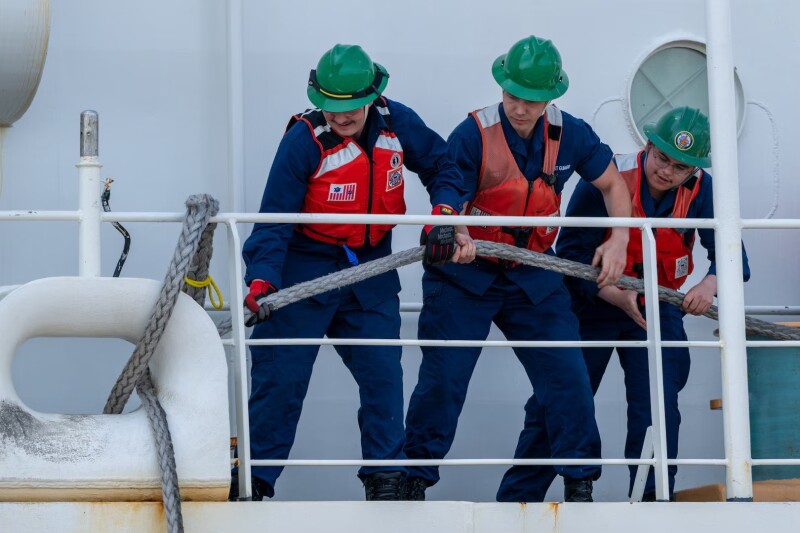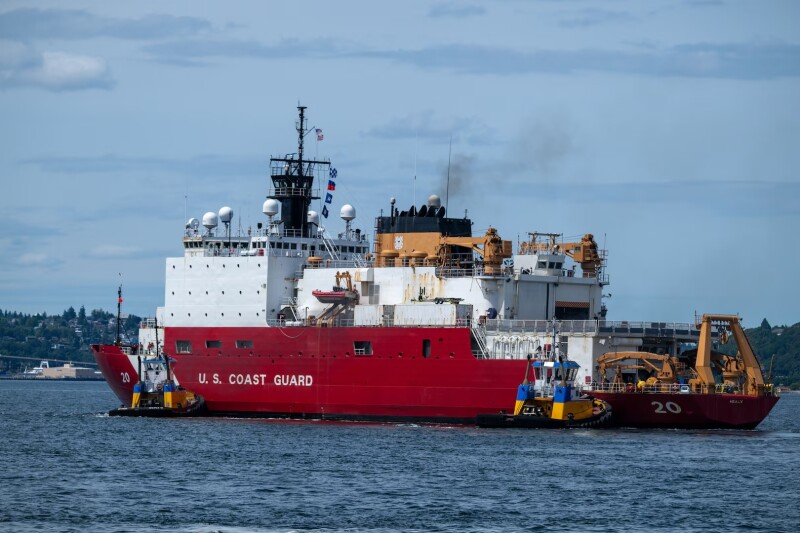The Coast Guard ‘s icebreaking cutter Healy departed Seattle June 26 for its annual Arctic deployment, in support of missions “to study the formation and movement of sea ice and the pathways followed by Atlantic and Pacific waters in the Arctic, and ocean circulation patterns in the East Siberian and Laptev seas,” according to a Coast Guard statement.
The first mission will be a collaboration with the Office of Naval Research to deploy and service instruments for its Arctic Mobile Observing System (AMOS). The system advances autonomous, mobile observing methodologies to enable studies of sea ice dynamics and improve understanding of the circulation of water masses in the Arctic.
AMOS focuses on developing technologies and approaches for creating a scalable observing system for sustained, persistent presence in the ice-covered Arctic.
Working with the National Science Foundation, the Healy’s second mission will include recovering, servicing, and deploying long-term subsurface mooring arrays and conducting multidisciplinary surveys in support of the Nansen and Amundsen Basins Observational System (NABOS).
Healy last supported AMOS and the NABOS missions in 2023.
“We are eager to return to the Arctic,” said Capt. Kristen Serumgard, the Healy’s commanding officer, in the Coast Guard’s announcement of the sailing. “Healy is uniquely positioned to advance scientific understanding of the Arctic environment, directly supporting security and defense of the nation’s northernmost borders and maritime approaches.”
The 420’ Healy is the Coast Guard’s only icebreaker designed and equipped with scientific instruments to support high-latitude Arctic research. In addition to facilitating science and technology operations, the Healy conducts a range of Coast Guard missions, such as search and rescue, ship escorts, environmental protection and enforcement of laws and treaties.





